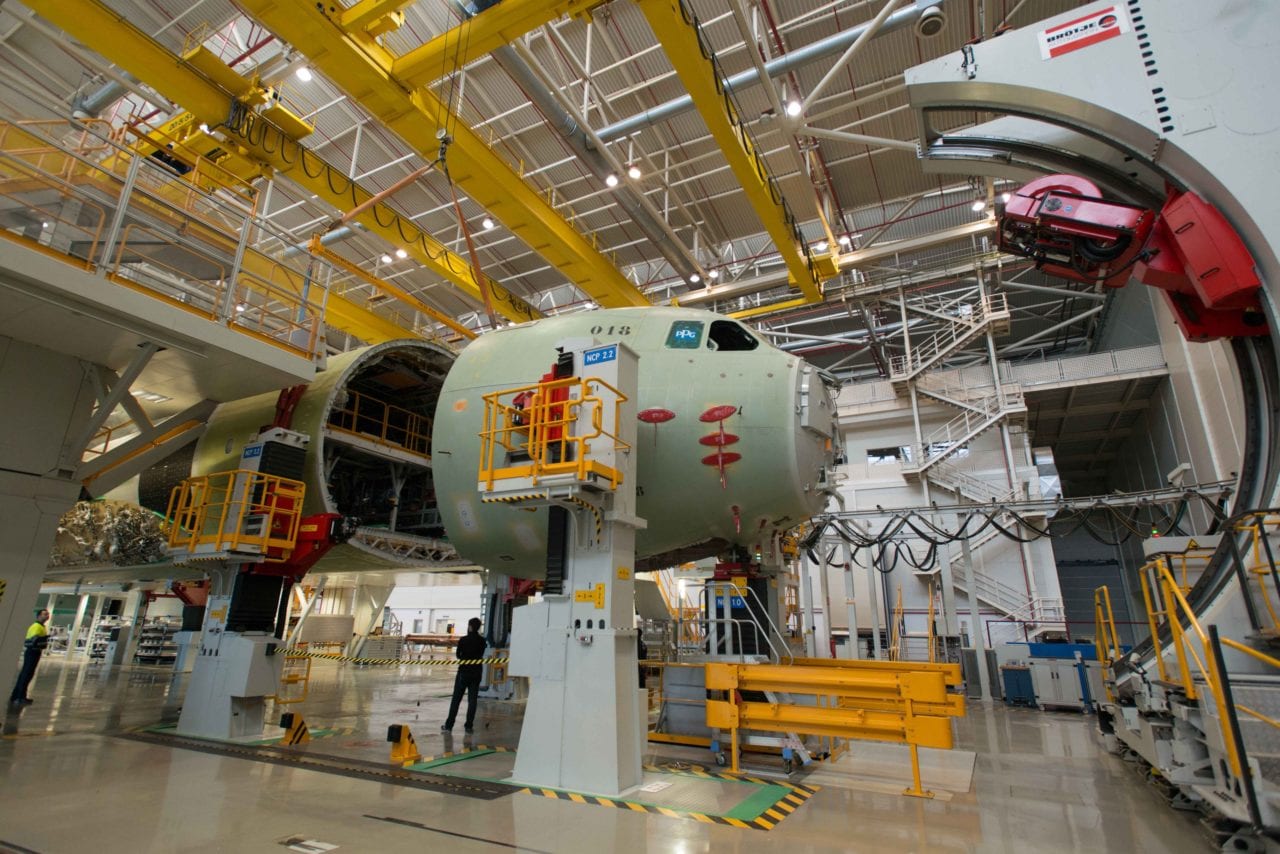
German Air Force A400M in final assembly. Photo, courtesy of Airbus.
The German federal parliament is questioning the combat readiness of military equipment, including A400 military transport aircraft, Tiger attack helicopters and NH90 multi-role helicopters delivered to Germany’s armed forces, or Bundeswehr.
A Report on the Operational Readiness of the Bundeswehr Primary Weapons Systems by Hans-Peter Bartels, the Bundestag’ s military commissioner, earlier this year found a low readiness rate of brand-new military aircraft. For example, of seven Tiger attack helicopters and seven NH90s delivered last year to the Bundeswehr, just two and four were operationally ready, respectively, according to the report.
The ongoing controversy over the relationship between industry and the German military caused Airbus to cancel an Innovation Day scheduled for Nov. 14 in Bonn, Germany. Airbus builds the A400M and Tiger helos, while NHIndustries — a collaboration among Airbus Helicopters, Leonardo and Fokker Aerostructures — builds the NH90.
The decision to cancel the Innovation Day “was not easy for us,” said Judith Metschies, head of operational marketing for Airbus Defense and Space, Intelligence. “The background is the current public discussion in Germany about the close proximity between the Bundeswehr and industry. We regret the cancellation very much, but wanted to respect the current discussions and avoid possible criticism of participants and organizers.”
The Innovation Day was to include presentations on helicopter digitization and the H145M and NH90 helicopters, as well as speeches on future air power and meetings with Dirk Hoke, CEO of Airbus Defense and Space; Wolfgang Schoder, Airbus’ executive vice president of light helicopters and governmental programs and the CEO of Airbus Helicopters Germany.
Germany, which annually spends less than eight percent of what the U.S. Defense Department does on defense, is in the middle of a debate about the proper place of the Bundeswehr in German society.
Check out the full version of this article in Rotor & Wing International, a sister publication to Avionics.